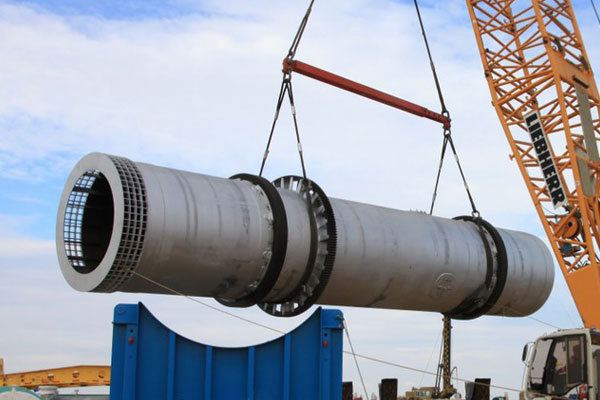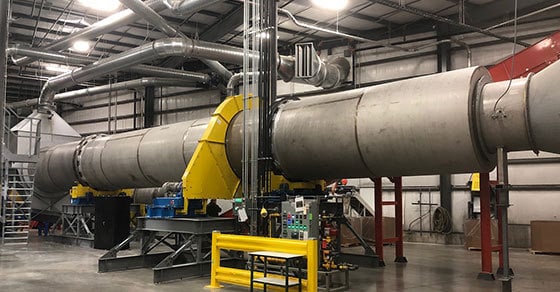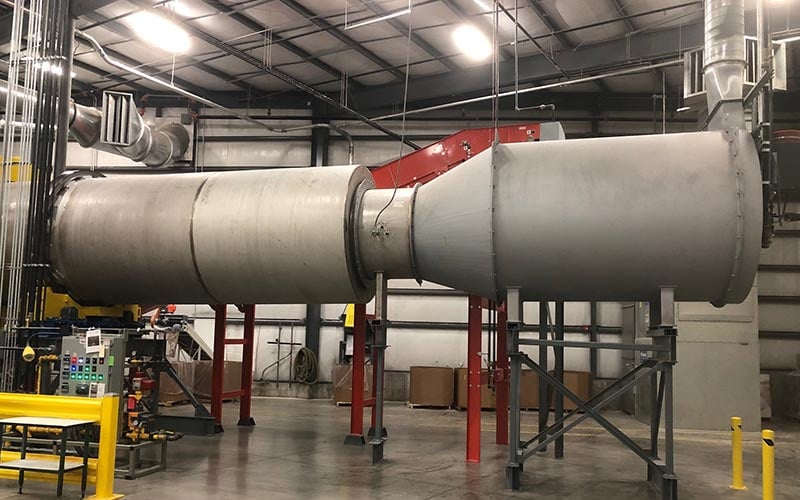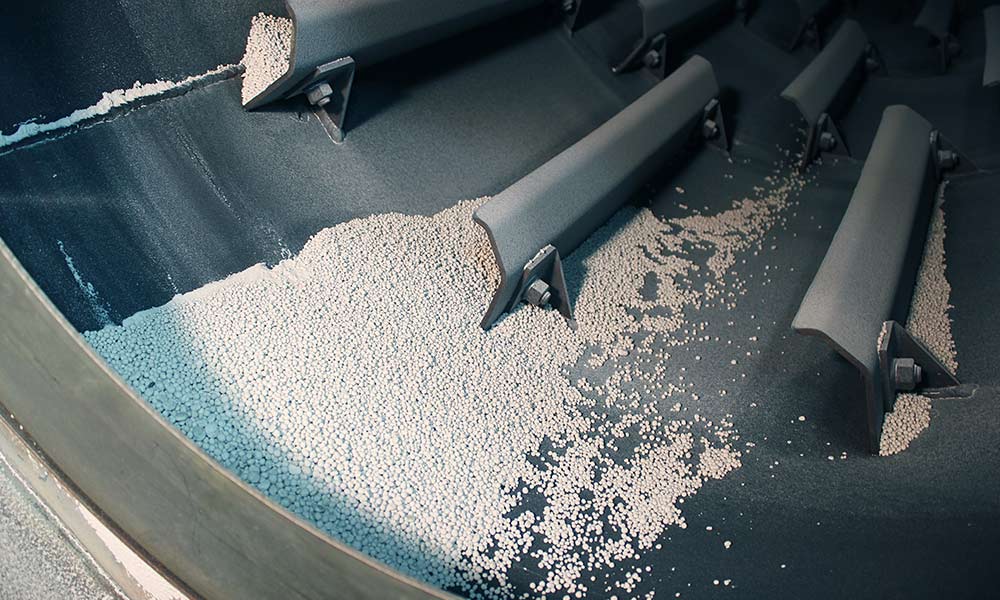When it comes to drying material exiting a centrifuge, rotary dryers provide a reliable and consistent drying solution.
Centrifuges are a critical and growing asset in modern industrial processing, allowing processors to separate solids from liquids in the pursuit of a wide range of production goals. But production is not always complete after the centrifuge; depending on the end use of the material and its unique characteristics, drying may be necessary.
What follows is a look at how rotary dryers help to prepare centrifuged materials for subsequent processing or disposal.

FEECO Rotary Dryer (with trommel screen/grizzly)
Why Dry Material Exiting a Centrifuge?
While centrifuges remove a large portion of the material’s moisture, some moisture still remains in the material exiting the centrifuge. This moisture content may be suitable for some applications, or when the material will be landfilled, but may present challenges if the material requires subsequent processing, or if the remaining moisture content inflates transportation costs or tipping fees.
As such, the choice to implement an additional drying step after the centrifuge typically relates to one or more of the following reasons:
To Make Transportation More Efficient
The more moisture a material contains, the less efficient shipping it becomes, as one is essentially paying to transport water. Thus, if moisture is removed, shipping the same amount of material costs less.
Drying also frequently offers a reduction in product volume, further improving the economics of shipping bulk solids by reducing the number of transport loads required.
To Streamline Processing
Although significantly reduced in moisture content already, the material exiting the centrifuge may still contain enough moisture to clog downstream production equipment. In these settings, a post-centrifuge dryer further reduces the moisture content to help ensure a smooth flow of material throughout the production line.
To Prepare Material for Downstream Processing
In addition to promoting a smoother flow of material, drying is also a means of preparing material for subsequent processing techniques, which is applicable to a wide range of settings. If the material will be granulated, for example, drying is used to bring the material into the required moisture range for optimal agglomerate formation.
Material may also be dried in order to prepare it for processing in a rotary kiln. In this case, drying improves flowability of the material – a necessity in rotary kiln processing. Drying also makes the kiln more efficient, as the kiln will not be tasked with reducing moisture content. Some materials may also require a drying step prior to the kiln in order to achieve the desired chemical reaction or phase change.
Rotary Dryers for Centrifuge Cake in Processing Sludges
One of the key applications for rotary dryers in drying centrifuge cake is the processing of sludge materials. Centrifuges are widely applied in sludge processing to recover valuable materials, or to process sludges for more efficient landfilling by decreasing transportation costs and reducing material volume. Drying further contributes to these efforts for materials such as:
- Iron hydroxide cake
- Metal filter cake sludge
- Flue Gas Desulfurization (FGD) Sludge (for ammonium sulfate recovery)
- Manure sludge
Rotary Dryers in the Crystallization Process
Centrifuges are also commonly used in the crystallization process to separate solid crystals from the mother liquor in the production of materials such as:
For these materials, drying is used to produce a saleable product by removing the remaining moisture content, or preparing the material for a granulation process. In the case of ammonium sulfate, for example, crystals exiting the centrifuge typically contain around 1.0 – 2.5% moisture. The rotary dryer further reduces the moisture content to below 1.0% for a marketable product.
Rotary Dryer Design for Processing Centrifuged Materials
Dryer design for any application is largely dependent on the material characteristics and processing goals. While this means that the dryer should be configured around the material and process objectives, it is also one reason why rotary dryers are chosen for such applications.
In addition to providing a stable, high-capacity drying solution, rotary dryers are extremely flexible, allowing them to be tailored to precise process specifications via design and fabrication customization. Rotary dryers employed for drying materials from a centrifuge may be designed to accommodate a wide range of configurations – most importantly, mode of heating (direct or indirect) and air flow (co-current or counter-current).
Since materials exiting the centrifuge are often in the form of a cake, knockers are a common addition to rotary dryers. A combustion chamber may be used in cases where product quality is important and therefore, direct flame contact is undesirable.
Direct Rotary Dryer with Combustion Chamber
Evaluating Centrifuged Materials for Drying
The diverse nature of centrifuged materials often makes testing an important part of developing an optimal drying solution, particularly as the number of applications for centrifuges grows.
Dryer testing programs such as those conducted in the FEECO Innovation Center are vital to establishing key process parameters and gathering data for the design of a commercial-scale dryer. For drying, testing generally centers around:
- Inlet and outlet moisture content of material
- Inlet and outlet material temperature
- Material feed rate
- Residence time
- Inlet process air temperature
- Outlet gas parameters
Interior view of rotary dryer after a test in the FEECO Innovation Center
Conclusion
Whether used in the crystallization process or for treating wastewater sludge, rotary drum dryers play an essential role in treating centrifuged materials, allowing processors to achieve more efficient disposal and transportation, as well as produce a saleable product.
FEECO is the leading provider of custom rotary dryers for a wide range of applications, centrifuged materials included. Our custom dryers have a well-earned reputation for longevity and reliability, and are backed by testing in our Innovation Center. We also offer a parts and service program for evaluating and improving dryer performance, conducting routine maintenance and repairs, and so much more. For more information on our rotary dryers, contact us today!





